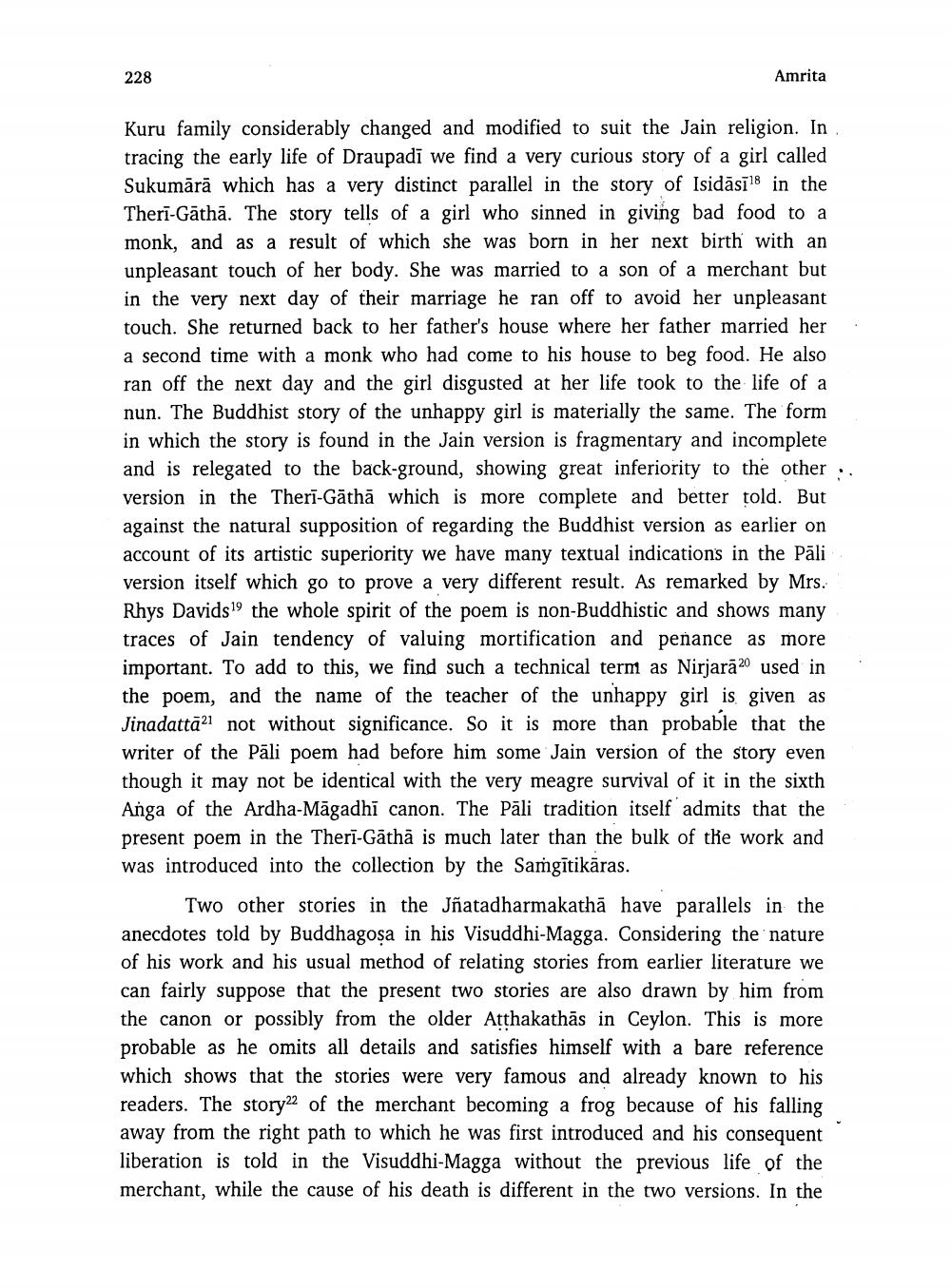________________
228
Amrita
Kuru family considerably changed and modified to suit the Jain religion. In tracing the early life of Draupadi we find a very curious story of a girl called Sukumārā which has a very distinct parallel in the story of Isidāsī8 in the Therī-Gāthā. The story tells of a girl who sinned in giving bad food to a monk, and as a result of which she was born in her next birth with an unpleasant touch of her body. She was married to a son of a merchant but in the very next day of their marriage he ran off to avoid her unpleasant touch. She returned back to her father's house where her father married her a second time with a monk who had come to his house to beg food. He also ran off the next day and the girl disgusted at her life took to the life of a nun. The Buddhist story of the unhappy girl is materially the same. The form in which the story is found in the Jain version is fragmentary and incomplete and is relegated to the back-ground, showing great inferiority to the other version in the Therī-Gāthā which is more complete and better told. But against the natural supposition of regarding the Buddhist version as earlier on account of its artistic superiority we have many textual indications in the Pāli version itself which go to prove a very different result. As remarked by Mrs. Rhys Davids 19 the whole spirit of the poem is non-Buddhistic and shows many traces of Jain tendency of valuing mortification and penance as more important. To add to this, we find such a technical term as Nirjarā20 used in the poem, and the name of the teacher of the unhappy girl is given as Jinadattāli not without significance. So it is more than probable that the writer of the Pāli poem had before him some Jain version of the story even though it may not be identical with the very meagre survival of it in the sixti Anga of the Ardha-Māgadhi canon. The Pāli tradition itself admits that the present poem in the Therī-Gātha is much later than the bulk of the work and was introduced into the collection by the Samgītikāras.
Two other stories in the Jñatadharmakathā have parallels in the anecdotes told by Buddhagosa in his Visuddhi-Magga. Considering the nature of his work and his usual method of relating stories from earlier literature we can fairly suppose that the present two stories are also drawn by him from the canon or possibly from the older Atthakathās in Ceylon. This is more probable as he omits all details and satisfies himself with a bare reference which shows that the stories were very famous and already known to his readers. The story22 of the merchant becoming a frog because of his falling away from the right path to which he was first introduced and his consequent liberation is told in the Visuddhi-Magga without the previous life of the merchant, while the cause of his death is different in the two versions. In the




